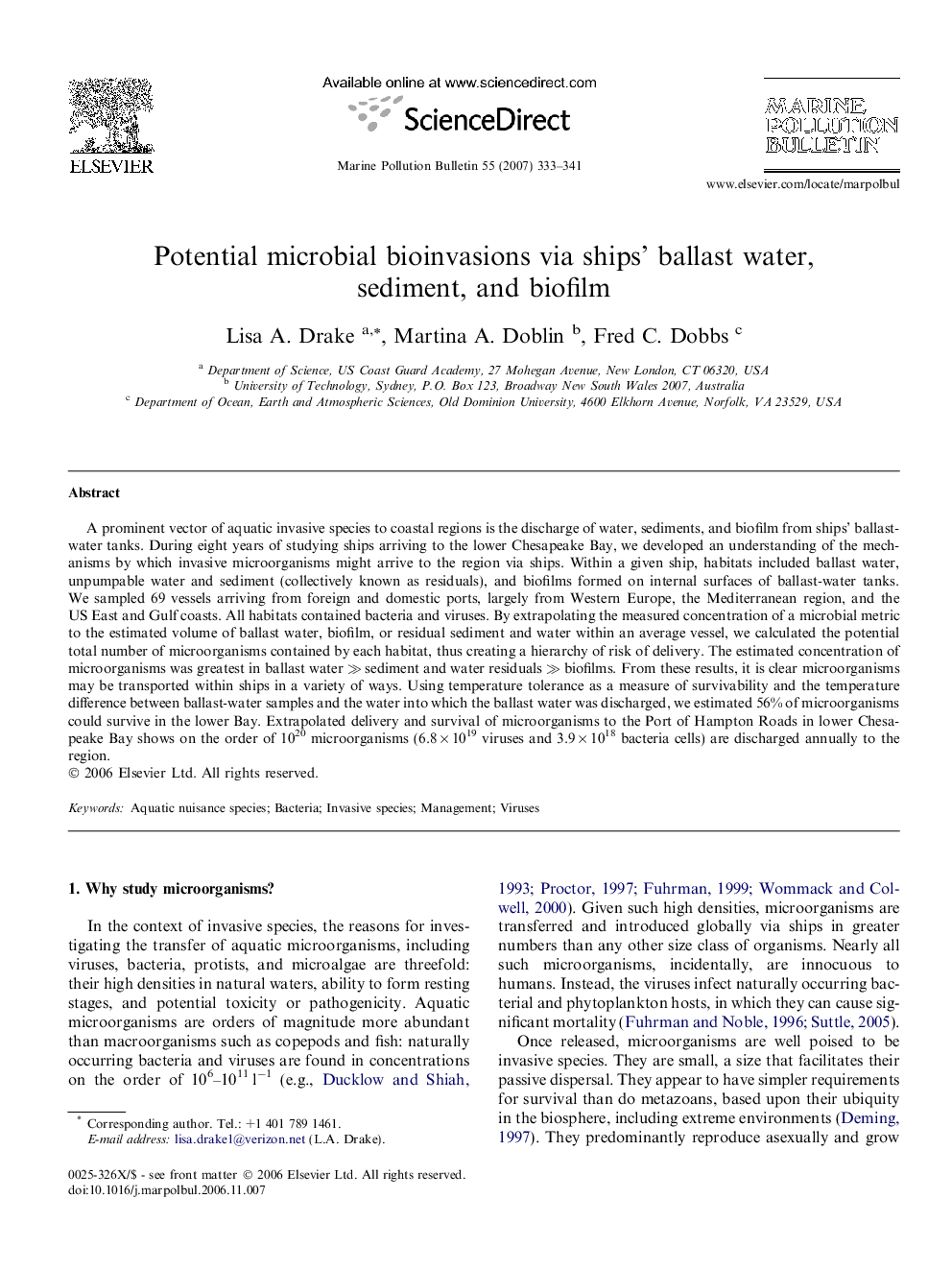| کد مقاله | کد نشریه | سال انتشار | مقاله انگلیسی | نسخه تمام متن |
|---|---|---|---|---|
| 4477366 | 1622772 | 2007 | 9 صفحه PDF | دانلود رایگان |

A prominent vector of aquatic invasive species to coastal regions is the discharge of water, sediments, and biofilm from ships’ ballast-water tanks. During eight years of studying ships arriving to the lower Chesapeake Bay, we developed an understanding of the mechanisms by which invasive microorganisms might arrive to the region via ships. Within a given ship, habitats included ballast water, unpumpable water and sediment (collectively known as residuals), and biofilms formed on internal surfaces of ballast-water tanks. We sampled 69 vessels arriving from foreign and domestic ports, largely from Western Europe, the Mediterranean region, and the US East and Gulf coasts. All habitats contained bacteria and viruses. By extrapolating the measured concentration of a microbial metric to the estimated volume of ballast water, biofilm, or residual sediment and water within an average vessel, we calculated the potential total number of microorganisms contained by each habitat, thus creating a hierarchy of risk of delivery. The estimated concentration of microorganisms was greatest in ballast water ≫ sediment and water residuals ≫ biofilms. From these results, it is clear microorganisms may be transported within ships in a variety of ways. Using temperature tolerance as a measure of survivability and the temperature difference between ballast-water samples and the water into which the ballast water was discharged, we estimated 56% of microorganisms could survive in the lower Bay. Extrapolated delivery and survival of microorganisms to the Port of Hampton Roads in lower Chesapeake Bay shows on the order of 1020 microorganisms (6.8 × 1019 viruses and 3.9 × 1018 bacteria cells) are discharged annually to the region.
Journal: Marine Pollution Bulletin - Volume 55, Issues 7–9, 2007, Pages 333–341